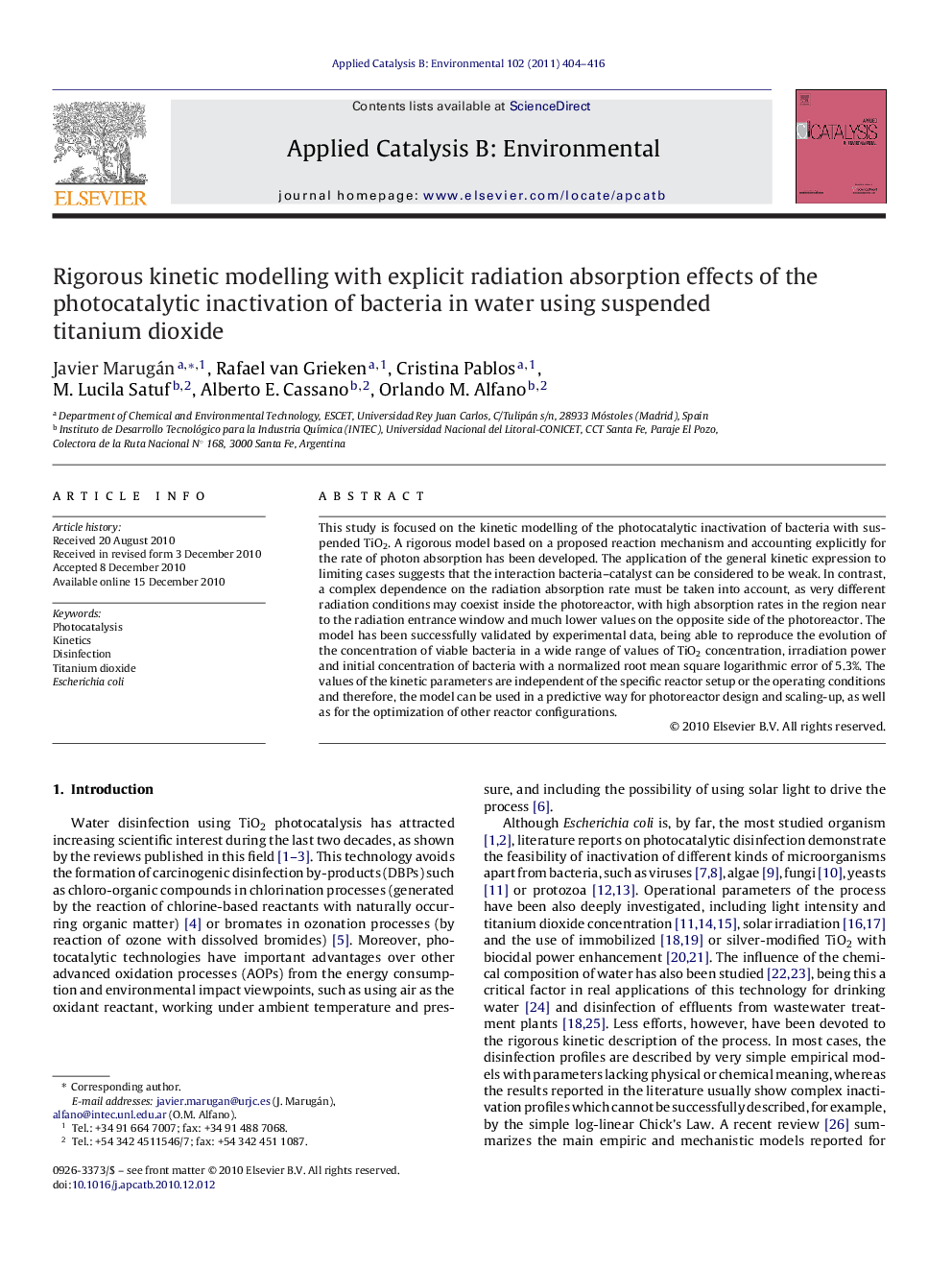| Article ID | Journal | Published Year | Pages | File Type |
|---|---|---|---|---|
| 47104 | Applied Catalysis B: Environmental | 2011 | 13 Pages |
This study is focused on the kinetic modelling of the photocatalytic inactivation of bacteria with suspended TiO2. A rigorous model based on a proposed reaction mechanism and accounting explicitly for the rate of photon absorption has been developed. The application of the general kinetic expression to limiting cases suggests that the interaction bacteria–catalyst can be considered to be weak. In contrast, a complex dependence on the radiation absorption rate must be taken into account, as very different radiation conditions may coexist inside the photoreactor, with high absorption rates in the region near to the radiation entrance window and much lower values on the opposite side of the photoreactor. The model has been successfully validated by experimental data, being able to reproduce the evolution of the concentration of viable bacteria in a wide range of values of TiO2 concentration, irradiation power and initial concentration of bacteria with a normalized root mean square logarithmic error of 5.3%. The values of the kinetic parameters are independent of the specific reactor setup or the operating conditions and therefore, the model can be used in a predictive way for photoreactor design and scaling-up, as well as for the optimization of other reactor configurations.
Graphical abstractFigure optionsDownload full-size imageDownload as PowerPoint slideResearch highlights▶ Succesful mechanistic kinetic modelling of Escherichia coli photocatalytic inactivation. ▶ Reproduction error below 5.3% for a wide range of experimental variables. ▶ A weak bacteria–TiO2 interaction can be succesfully assumed to simplify the model. ▶ A complex dependence of the reaction rate with the irradiation power is required. ▶ The model can be used in a predictive way for photoreactor design and scaling-up.
